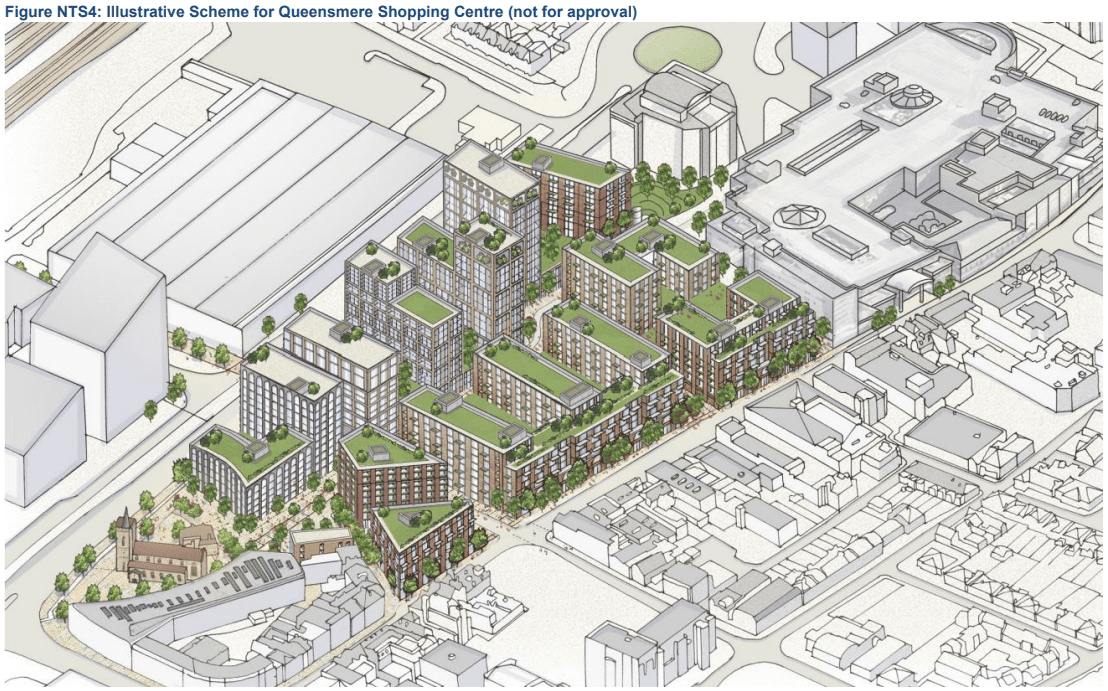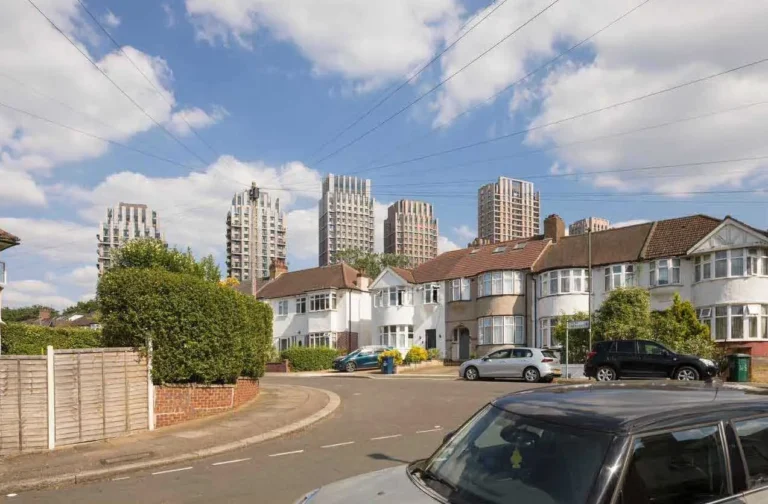
Illustrative outline masterplan, image credit Slough Central.
An outline master plan for the eventual demolition of Slough’s Queensmere & Observatory Shopping Centres has been submitted by British Land as Development and Asset Manager.
The Queensmere & Observatory Shopping Centre site is owned by a wholly-owned subsidiary of the Abu Dhabi Investment Authority (ADIA).
Plans prepared by project architects Squire & Partners if approved will demolish the Queensmere shopping centre, built in the 1970s and will be incrementally redeveloped with a residential lead scheme over 15 years.

Despite Slough’s excellent proximity to Central London, Heathrow Aiport and the largest industrial estate in single private ownership in Europe, The town’s high street has struggled, with numerous anchor tenants leaving amongst others 34 vacant lots within the town centre. Partly due to the strong presence of out of town retail further west along the Bath Road and further accelerated the pre-existing shift to online as a result of the pandemic.
This will see the creation of all new active travel routes from the south of the town centre through to the A4 in the north and through to Slough train station, which will be in reach of the West End, the Square Mile, Reading and Oxford within 45 minutes.
Slough is also placed within 10 miles of Heathrow Airport but lacks fixed high capacity infrastructure. Whilst plans for the Western Rail Link have been developed significantly in the last five years, the pandemic has resulted in the Department for Transport requesting Network Rail to postpone the submission of the Development Consent Order (DCO) from late 2021 to late 2022.
If built journey times to Heathrow from Slough would be slashed from 35 minutes of the existing bus service to well under 10 minutes by the late 2020s, in addition to enabling a modal shift away from private and hire cars resulting in lower CO2 emissions equivalent to approximately 30 million road miles per year.

The need to redevelop the Queensmere Shopping Centre is spurred by two issues. Firstly its proximity and scale within the town centre mean that it is an ideal place to build the much-needed housing.
Contained with Slough Borough Council’s (SBC) Local Housing Needs Assessment (LHNA), referenced the minimum need for housing implied for Slough by the standard method, albeit the passage of time and its dynamic nature mean that this has slightly fallen to stand at 864 dwellings per annum at the time of writing. This notably increases almost tenfold to over 8,000 homes per annum when looking at wider functional geography that draws in most neighbouring authorities.
Whilst Slough has long drawn aspirational first-time homeowners by its lower home prices, 9x average incomes compared to 13x in the neighbouring London Borough of Hillingdon. It should be noted that an eagerly overdue arrival of direct one train services to key leisure and business districts of London, will eventually see prices similar to many other London boroughs but without some of the privileges afforded to Londoners.



